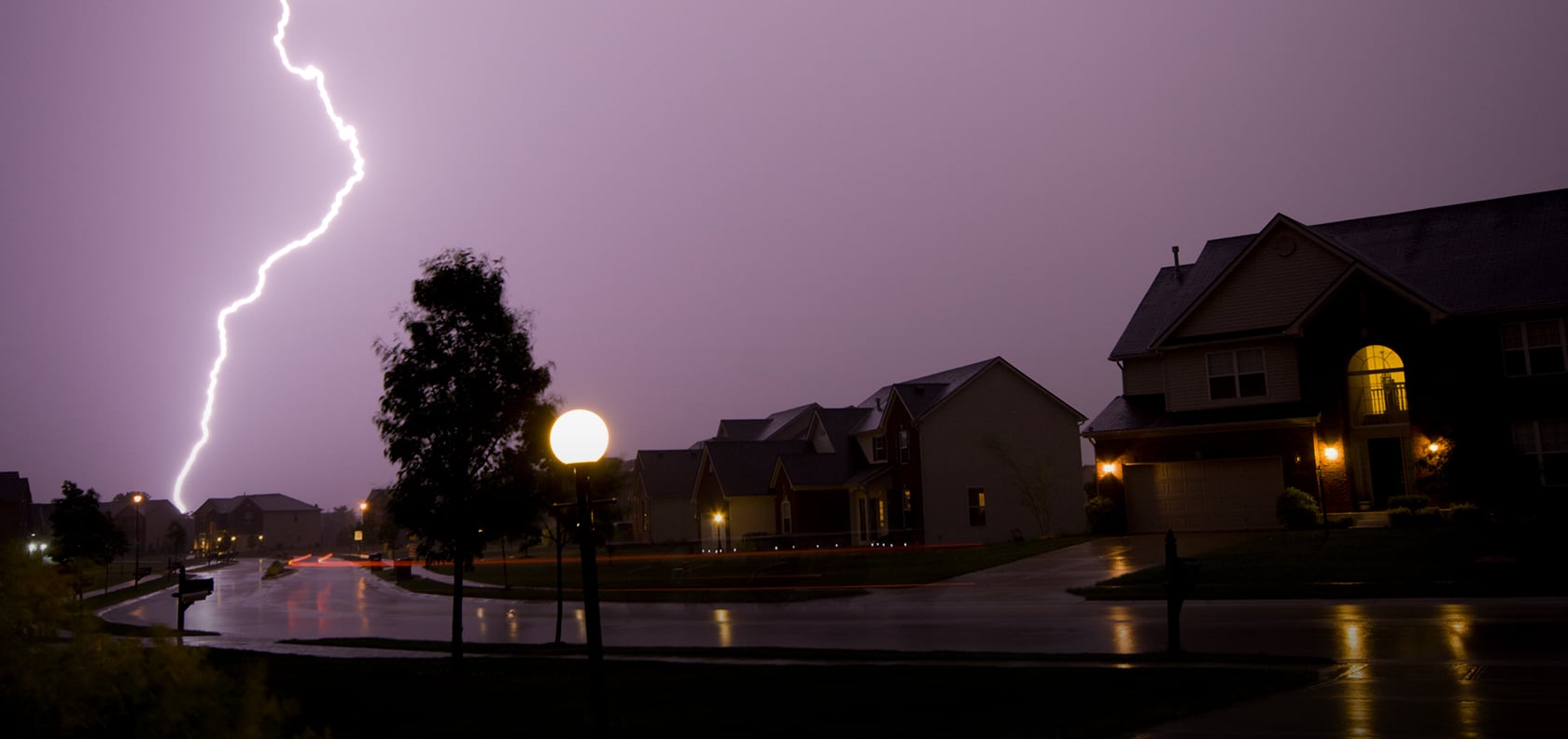Lightning strikes can happen any time there is a thunderstorm and can be a threat to both people and property.
According to the National Weather Service, the threat of lightning increases as a storm approaches and peaks when it is overhead. It gradually diminishes as the storm moves away.
Homeowners insurance data compiled by the Insurance Information Institute (III) found more than 62,000 lightning claims were filed in 2022. Of those claims, there were more than $952 million in insured losses, with the average claim totaling $15,280.
Should your home be damaged by a lightning strike, a standard homeowners insurance policy would usually cover resulting damages, such as a fire. You may be covered for damage caused by power surges as well. If your vehicle is damaged by a lightning strike, you may be covered under the comprehensive portion of your auto insurance policy.
Even if you are adequately insured, the National Lightning Safety Council has several recommendations to keep you and your property safe:
- Installing a Lightning Protection System will provide a designated path for the lightning current to travel and will reduce the risk of fire or structural damage to your home.
- Adding whole-house surge protectors, grounding systems and lighting rods will all help reduce the risk of fire and add extra layers of defense.
- If you are outside, take shelter inside a fully enclosed building, preferably one with a lightning protection system. A hard-topped vehicle is generally a safe place as well.
- Do not stand near open windows or doorways as they may contain metal components. Do not stand near any metal piping.
- Stay off balconies, porches, and out of open garages or carports.
According to the National Weather Service, lightning can enter a structure in one of three ways: a direct strike, through wires or pipes that extend outside the structure, or through the ground. Once inside, lightning can travel through a home’s electrical, phone, plumbing, and radio/television reception systems. Because of this, it’s recommended you:
- Unplug appliances and equipment when a thunderstorm is approaching, but not during a storm, as there is a risk you could be struck.
- Do not lie on concrete floors or lean against concrete walls.
- Do not touch electrical equipment like computers, radios, or TVs. You can, however, use remote controls.
- Do not use small electric appliances that use cords like toasters and hairdryers.
- Do not use plumbing, sinks, tubs, radiators, and stoves.
- Do not use a landline with a cord. Cellphones and cordless phones are OK.
Because lightning generates electric surges that can damage electronic equipment, the average surge protector will not protect your items from a lightning strike.
Don’t go near downed or live wires. Practice safety above all else. Contact your fire department if there is a fire and your utility company if you have downed wires or experienced a power outage.
If your property or appliances have been damaged, take photos when it is safe to do so, and contact your insurance agent to discuss the options available to you under your homeowner’s insurance policy. You can also utilize ePICS® for homeowners and answer a few basic questions about your household damage from any device.
Taking necessary precautions to protect yourself and your home is always an excellent way to ensure you and your family stay as safe as possible while reducing the potential for damage to your home.
Before any damage occurs, it’s also a good idea to check with your independent agent to ensure you have the right type of coverage on your auto insurance or property insurance policies. Your agent can always review your policies with you to see how much coverage you have, your deductibles, and how potential claims would be paid. And if you’re not insured with MAPFRE yet, get a fast, free quote today!



